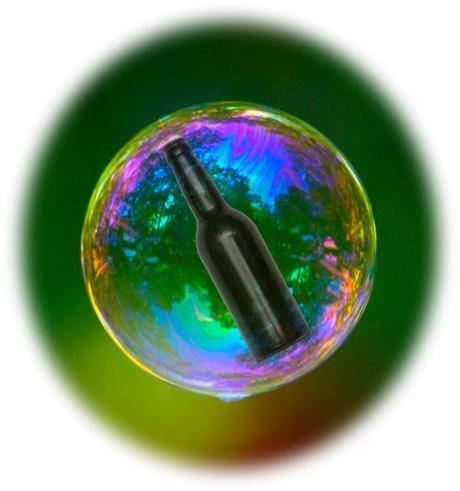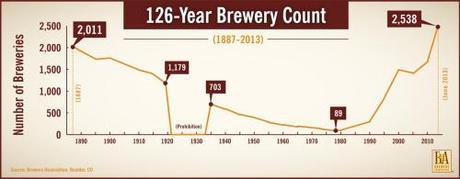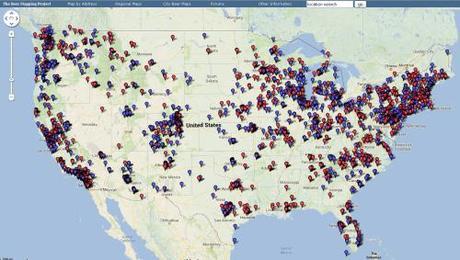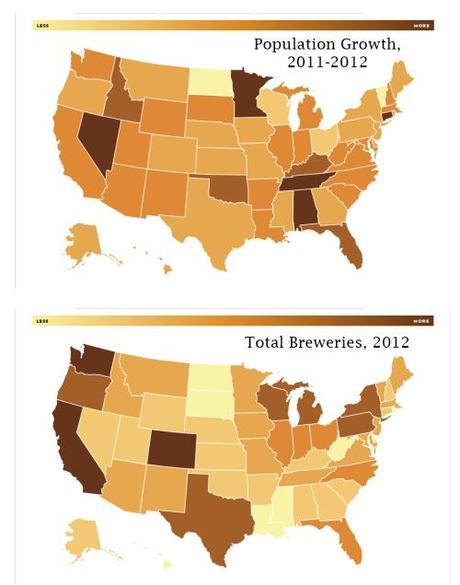
The idea of the craft beer bubble is nothing new. In fact, I’ve discussed it multiple times in these posts.
For those either interested in beer, business or both, it’s an ongoing conversation. With such monumental growth in craft beer in just the last few years, where are our limits? Do we have any? Despite the 2,538 breweries already in operation and about 1,500 more in planning, people point out it would simply put us on par with some of our beer-loving European brethren.
The craft beer bubble is the topic of discussion for October’s “Session” post – the monthly event where beer writers from around the world come together to post and talk about a singule topic, as prescribed by that month’s “host” blog.
*For reference, here’s the definition of an economic bubble
Derek at It’s Not Just the Alcohol Talking asks:
Many in the industry are starting to wonder when, and more importantly how, the growth is going to stop. Is craft beer going to reach equilibrium and stabilize, or is the bubble just going to keep growing until it bursts?
To me, this isn’t a one-and-done kind of post. This week, I’m going to try and look at various angles of what a craft beer bubble means. Since the topic is so fluid and ever-changing, think of these posts as something of a real-time thought process where I hope we can work together to come up with something of an answer.
Curious if this bubble will burst? Let’s start poking it a bit and see what we can find.
Saturation
I feel that the best place to start this discussion is partially what would lead to a popped bubble – market saturation. Technically, this is not at the root of a bubble, but it’s certainly a big part of the debate over the craft beer version of it.
Craft beer has flooded the market in recent years, with exponential growth since 2009:

But where are these breweries and brewpubs opening? As discussed in my previous series on “How (and Where) We Search for Beer,” the Northeast is a popular spot and of course the West Coast doesn’t skimp, either.
Here’s a pieced-together map I created with the help of the Beer Mapping Project. It’s all breweries and brewpubs in operation, based on the latest info collected by the site (left click for full size):

That’s a lot.
I feel that’s where the discussion turns a bit and people start to wonder if that volume is sustainable when it comes to shelf space in the local beer store or room for another tap at your favorite bar. But most important to that is this: are there enough customers?
I ask because if the customer base is growing as the number of craft beers and breweries increase, then the craft beer market can breath much easier. If there are mouths to feed, there will be beer to fill them.
You may recall a New Yorker piece from over the summer detailing the incredible growth of craft beer in the United States. Chief among its importance was the mapping of several of its points. For ease, here are two maps, highlighting in shaded states the population growth of the U.S. on top and the total number of breweries, per the Brewers Association, on the bottom:

That may give an inkling of overall beer growth, but what I take away is that areas that have already dominated beer growth (Northeast and West Coast) will have a ton of breweries because there are already lots of people there.
So then I decided to dive into census data. The chart below features the 2010 reported population and the estimated 2012 population. All states are ordered based on the percentage increase in population numbers between those years.
Next to that is the best data I could find from the Brewers Association tallying the number of breweries reported to them in the U.S. in 2011 and 2012. I find this data interesting when paired with the New Yorker map.
For example, you’ll notice that Tennessee saw a great amount of population growth from 2011 to 2012 but its total number of breweries was relatively low, as reported by the New Yorker. In the following chart, however, you’ll see that the state’s population grew 1.74 percent and also gained seven breweries from 2011 to 2012. On the flip side, Wisconsin saw growth of .69 percent but 13 new breweries. “If you build it,” I suppose:
State
2010 pop
2012 pop
% pop increase
2011 breweries
2012 breweries
Brewery increase
N Dakota
672,591
699,628
+4.02
2
4
2
Texas
25,145,561
26,059,203
+3.63
57
84
27
Utah
2,763,885
2,855,287
+3.31
16
16
0
Colorado
5,029,196
5,187,582
+3.15
127
151
24
Alaska
710,231
731,449
+2.99
20
22
2
Florida
18,801,310
19,317,568
+2.75
42
57
15
Washington
6,724,540
6,897,012
+2.56
134
158
24
Arizona
6,392,017
6,553,255
+2.52
34
44
10
Georgia
9,687,653
9,919,945
+2.40
20
22
2
S Dakota
814,180
833,354
+2.36
5
7
2
Hawaii
1,360,301
1,392,313
+2.35
7
9
2
Virginia
8,001,024
8,185,867
+2.31
40
48
8
N Carolina
9,535,483
9,752,073
+2.27
57
70
13
Wyoming
563,626
576,412
+2.27
12
15
3
Nevada
2,700,551
2,758,931
+2.16
18
21
3
Delaware
897,934
917,092
+2.13
8
9
1
S Carolina
4,625,364
4,723,723
+2.13
16
16
0
California
37,253,956
38,041,430
+2.11
261
316
55
Maryland
5,773,552
5,884,563
+1.92
20
30
10
Idaho
1,567,582
1,595,728
+1.80
23
29
6
Oregon
3,831,074
3,899,353
+1.78
121
140
19
Tennessee
6,346,105
6,456,243
+1.74
23
30
7
Oklahoma
3,751,351
3,814,820
+1.69
9
10
1
Nebraska
1,826,341
1,855,525
+1.60
18
19
1
Montana
989,415
1,005,141
+1.59
32
36
4
Louisiana
4,533,372
4,601,893
+1.51
8
8
0
Mass.
6,547,629
6,646,144
+1.50
42
47
5
Minnesota
5,303,925
5,379,139
+1.42
34
47
13
New Mexico
2,059,179
2,085,538
+1.28
25
27
2
Kansas
2,853,118
2,885,905
+1.15
16
19
3
Arkansas
2,915,918
2,949,131
+1.14
6
10
4
New York
19,378,102
19,570,261
+0.99
69
88
19
Kentucky
4,339,367
4,380,415
+0.95
10
14
4
Iowa
3,046,355
3,074,186
+0.91
26
33
7
Alabama
4,779,736
4,822,023
+0.88
6
10
4
New Jersey
8,791,894
8,864,590
+0.83
25
26
1
Indiana
6,483,802
6,537,334
+0.83
43
54
11
Wisconsin
5,686,986
5,726,398
+0.69
70
83
13
Mississippi
2,967,297
2,984,926
+0.59
2
3
1
Missouri
5,988,927
6,021,988
+0.55
43
45
2
Penn.
12,702,379
12,763,536
+0.48
88
102
14
Conn.
3,574,097
3,590,347
+0.45
15
21
6
Illinois
12,830,632
12,875,255
+0.35
52
67
15
New Hampshire
1,316,470
1,320,718
+0.32
15
19
4
W Virginia
1,852,994
1,855,413
+0.13
5
5
0
Ohio
11,536,504
11,544,225
+0.07
45
58
14
Maine
1,328,361
1,329,192
+0.06
33
37
4
Vermont
625,741
626,001
+0.04
23
25
2
Michigan
9,883,640
9,883,360
0
102
122
20
Rhode Island
1,052,567
1,050,292
-0.22
6
8
2
So what am I getting at here? Well, I suppose that’s part of the running conversation.
If we talk about saturation, it seems fitting to discuss where the breweries are coming from. For the country as a whole, craft beer saturation may not have been reached, but if breweries are focusing on local and people are focusing on locally-produced goods, it makes sense to look at saturation from a local perspective – not just a nation-wide one.
What saturation means for someone in California and its 300+ breweries/brewpubs is different than what it means for North Dakota and it’s growing population with just two breweries. If North Dakota had 300+ breweries, this would be an entirely different discussion. Just ask Mike Stevens, CEO of Founders Brewing Co. Local is the name of the game. Perhaps that’s where managing the craft beer bubble starts.
This post may not provide specific answers, but I hope it’ll act as a jumping off point for further discussion. Share your thoughts/experiences/gripes below and let’s also chat on Wednesday when we take a look at how investing in beer may be a game changer.
+Bryan Roth
“Don’t drink to get drunk. Drink to enjoy life.” — Jack Kerouac

